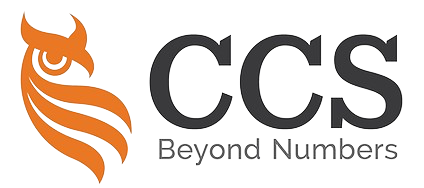Since a partnership is not a legal person it cannot own fixed assets. These, therefore, belong jointly to the individual partners.
Those who own the plant or machinery and use it in the course of their trade, business, or profession are the ones who are generally eligible for the capital allowances. Nevertheless, a notable exemption is provided for beneficial ownership in Director General of Inland Revenue v Teo Tuan Kwee(1998) MSTC 3,648.
由于合伙企业不是一个法人,它不能拥有固定资产。因此,这些资产属于各个合伙人的共同财产。
那些本身拥有工厂或机器并在其贸易、业务或专业过程中使用的人,通常有资格获得资本津贴。然而,在马来西亚内陆税收局 诉Teo Tuan Kwee(1998)MSTC 3,648 一案中,对实际所有权 [Beneficial Ownership] 提供了明显的豁免。
Director-General of Inland Revenue v Teo Tuan Kwee(1998) MSTC 3,648. The taxpayer was the proprietor of a lorry transport business. He purchased four motor lorries for his business. Three of the lorries were acquired on hire purchase while the fourth was purchased directly from the seller.
The taxpayer was assessed to income tax on his income from his lorry transport business and dividends from shares.
The taxpayer appealed against the assessment. He argued that no deductions were allowed by the Revenue in respect of capital allowances which he claimed were due to him under Sch. 3 of the Income Tax Act 1967 (“the Act”) on the capital expenditure incurred by him for the purchase of the four motor lorries.
The Revenue had rejected the taxpayer’s claim for initial and annual allowances on the lorries on the grounds that the taxpayer was not the legal owner of the lorries.
The lorries had been registered in the names of third parties who had lent their names in consideration of earning monthly rentals for the haulage permits which were in their respective names.
The Special Commissioners held that the taxpayer was entitled to capital allowances under Sch. 3 of the Act as he had incurred capital expenditure by purchasing the four lorries for his lorry transport business.
The Revenue appealed to the High Court. The Revenue contended that capital allowances were only available to the owner of the lorries. Although the taxpayer had incurred capital expenditure in acquiring the lorries, he was not the registered owner of the lorries.
The question for determination was whether para. 15 and 46 of Sch. 3 of the Act referred to legal ownership or could be extended to beneficial ownership
Held: Appeal Dismissed
马来西亚内陆税收局 诉Teo Tuan Kwee(1998)MSTC 3,648 纳税人是一家货车运输公司的经营者,他为其业务购买了四辆货车。其中三辆货车是以租购方式购买的,而第四辆则是直接从卖家处购买。
纳税人被税收局评估为需要对其货车运输业务的收入和股票的红利征收所得税。
纳税人对该评估提出上诉。他争辩说,税收局不允许他扣除根据《1967年所得税法令》第3章所购买四辆的货车而产生的资本支出的资本津贴。
税收局拒绝了纳税人关于这些货车的初始和年度资本津贴申索的要求,理由是纳税人不是这些货车的合法所有者,也就是说,这四辆货车并非在纳税人名下登记注册的。
这些货车是以第三方的名义注册的,这些第三方借出他们的名字,以赚取他们各自名下的运输许可证的月租金为代价。
税收局特别专员 [The Special Commissioners] 认为,纳税人有权获得《1967年所得税法令》第3章所规定的资本津贴,因为他却好似为其运输业务购买了四辆货车,并产生了资本支出。
内陆税收局向高庭提出上诉。税收局辩称,资本津贴只适用于货车的所有者。虽然纳税人在购买货车时产生了资本支出,但他并不是货车的注册所有人。
在高庭需要确定的问题是,《1967年所得税法令》第3章第15段和第46段的规定是否适用。究竟《1967年所得税法令》第3条第15款和第46款是指法定所有权,还是可以扩展到实际所有权?
裁决:驳回上诉

As a result, any capital allowances allowed for income tax purposes in respect of assets are calculated for the year of assessment and these are divided among the partners in accordance with the profit-sharing ratios.
Any allowance that cannot be set off due to the insufficiency of profits is carried forward and forms part of the allowances for the next assessment year.
有鉴于此,就资产而言,任何允许的资本免税额都是在评估年度计算的,这些免税额在合伙人之间按照利润分配比例进行分配。
由于利润不足而无法抵消的任何免税额将被结转,并构成下一个评估年度的免税额的一部分。
Where there is a change in the partnership, for example, cessation or admission of a partner, so long as the businesses remain substantially the same and are carried on as one continuing business, capital allowances are calculated as if the business was conducted by the same persons.
That is to say that the capital allowances are allocated only amongst those who are partners at the end of the relevant basis period in their profit-sharing ratios.
如果合伙企业发生变化,例如停止或接纳一个合伙人,只要业务基本相同,并作为一个持续的业务进行,资本免税额的计算就如同该业务是由相同的人进行。
这就是说,资本津贴只在相关基准期结束时是合伙人的人之间按其利润分配比例分配。






